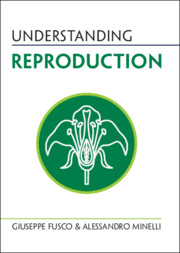Book contents
- Understanding Reproduction
- Series page
- Understanding Reproduction
- Copyright page
- Reviews
- Contents
- Foreword
- Preface
- Acknowledgements
- 1 Individuals and Reproduction
- 2 Reproduction in the Life Cycle
- 3 Reproduction Without Sex
- 4 Reproduction with Sex
- 5 Two-Parent Sexual Reproduction
- 6 One-Parent (or Nearly so) Sexual Reproduction
- 7 Development of Sexual Traits
- 8 Widening the View: Reproductive Strategies
- Concluding Remarks: Difficult Boundaries
- Summary of Common Misunderstandings
- References and Further Reading
- Figure Credits
- Index
8 - Widening the View: Reproductive Strategies
Published online by Cambridge University Press: 27 July 2023
- Understanding Reproduction
- Series page
- Understanding Reproduction
- Copyright page
- Reviews
- Contents
- Foreword
- Preface
- Acknowledgements
- 1 Individuals and Reproduction
- 2 Reproduction in the Life Cycle
- 3 Reproduction Without Sex
- 4 Reproduction with Sex
- 5 Two-Parent Sexual Reproduction
- 6 One-Parent (or Nearly so) Sexual Reproduction
- 7 Development of Sexual Traits
- 8 Widening the View: Reproductive Strategies
- Concluding Remarks: Difficult Boundaries
- Summary of Common Misunderstandings
- References and Further Reading
- Figure Credits
- Index
Summary
In the course of their lives, organisms spend time and energy on a number of activities and functions, of which reproduction is only one – think of growth, defence against predators and pests, and others. How many resources are used for reproduction, how much time is devoted to it and how this time is distributed over the course of life are all elements that characterize the different reproductive strategies. From an even wider perspective, in those organisms that at certain times in their lives can opt for one or another reproductive mode (e.g. sexual or asexual reproduction, as in many plants and many marine invertebrates), a reproductive strategy includes also this reproductive policy.
Keywords
- Type
- Chapter
- Information
- Understanding Reproduction , pp. 143 - 166Publisher: Cambridge University PressPrint publication year: 2023

